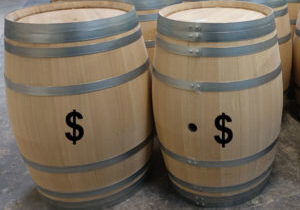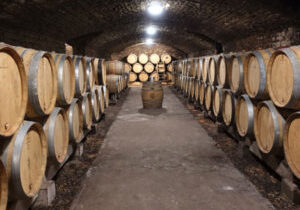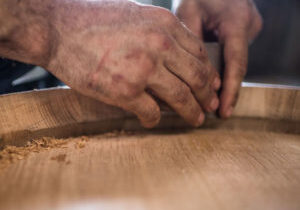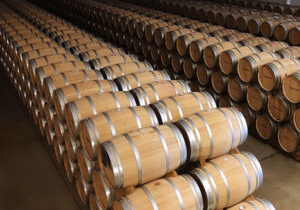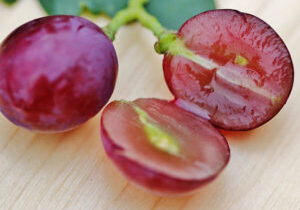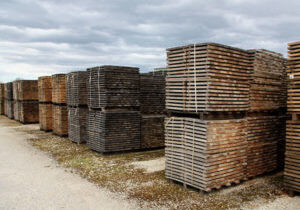HOW AMPHORAS CAN IMPROVE WINE QUALITY
Fresh, clean, approachable. This is the style of wine that appeals to the soon-to-be largest wine buying segment - millennials. They also want the wines to be distinct and show a sense of place.
A little-known secret is that amphoras make fresh wines AND enhance the expression of your grapes and vineyard.
Before I jump into why I love amphoras (hopefully by the end you will love them too) let’s talk about why you need “fresh tasting” wine and how to overcome some of the challenges.
Want to learn all about amphoras? Get your FREE eBook:
Your Guide to Amphoras
The Millennial Challenge
Millennials are coming into a powerful buying position in the wine industry, but many wineries are having trouble reaching them.
Why? Let’s focus on the flavor profile motivating millennials to buy. Consistent with other recent trends, the preferred style of wine is bright and refreshing with crisp acidity, soft tannins, low/moderate alcohol and minimal (if any) new oak.
Experience is also important to millennials, AKA the story. They don’t want to drink wines that taste like all the others. They opt for quality and uniqueness over quantity.
Amphoras are Cool
We know this. And so do millennials. But more importantly, amphoras are neutral vessels that preserve freshness and purity in a wine AND act like loudspeakers to your grapes and vineyard. And with a history going back thousands of years, boy do they have a story!
Noted Italian winemaker Elisabetta Foradori says about amphoras, “There is a direct transfer of the message of the terroir from the grape to the wine with an incredible purity and energy.”
By adding a few amphoras to your mix, you can get closer to the style younger wine drinkers want, but without sacrificing complexity.
Here are four ways amphoras can help you make the wines that are in demand while maintaining your high standards for quality and complexity:
1) MICRO-OXYGENATION
In order for your wine to evolve and become as great as it can be, it needs oxygen. An amphora can supply a similar level of micro-oxygenation as a new barrel, but with more consistency. With wood, 50% of the annual oxygen transfer is released in the first 2-4 months and then slows down.
With an amphora, micro-oxygenation is more linear and stable throughout the year. When maintained properly, an amphora will provide a similar level of micro-oxygenation year after year for its entire lifetime. And well-maintained amphoras never have to be replaced.
Working with innovative, modern amphora producers is key though. In order to control porosity, and therefore the level of micro-oxygenation, the amphoras need to be fired at very high temperatures, above 1900 °F. This is a new technique, one the Georgians didn’t have back when they were burying amphoras in the ground a thousand years ago.
2) PRESERVE WINE ACIDITY
Nothing contributes to wine freshness more than acidity. It’s been proven that amphoras fired at very high temperatures can preserve acidity in a wine. On the other hand, conventionally-made amphoras (lower cooking temps) can actually decrease acidity.
Cooking at higher temperatures prevents the migration of materials to the wine that might impact a wine’s pH, and therefore, lower acidity.
One producer, TAVA, recently conducted a study along with two independent labs to see if aging wine in amphoras impacted acidity. The test compared TAVA’s modern amphoras to the amphoras of two different conventional producers. These were the results:
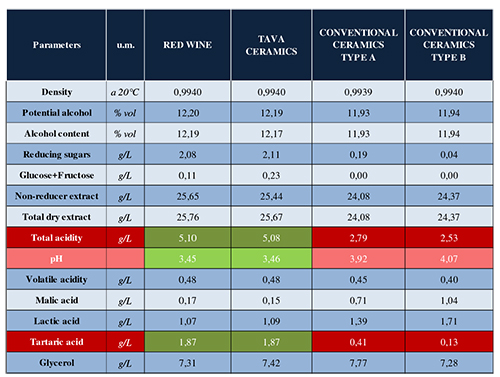
The main takeaway is that Total Acidity didn't decrease in the TAVA amphoras but did decrease in the conventional amphoras. But why? The researchers noticed that the levels of calcium were higher in the conventional amphoras, and they suspected this impacted the pH and lowered acidity.
CALCIUM LEVELS:
TAVA = 3.48
Amphora A = 189.18
Amphora B = 241.01
Since firing amphoras at higher temperatures limits the migration of materials to the wine, such as calcium, working with modern/innovative producers can help you preserve acidity and, therefore, freshness in your wine.
3) NEUTRAL VESSEL
Without the sweetness and toasted flavors that come from new oak, a wine will, of course, taste fresher, cleaner and brighter. As a result, the true character of the grapes and vineyard can shine through.
Producers of premium wines don’t want to abandon new oak entirely, and I’m not suggesting that. I’m a big fan of barrels! But you can change the balance in your overall blend and move toward a fresher style of wine by incorporating some amphoras.
Rather than the wines becoming less complex as a result of reducing oak, they’ll actually be more complex because you get the addition of flavors and aromas that would normally be suppressed by the new oak.
4) TOOLS FOR EXTRA O2 PROTECTION
Some amphora producers offer accessories to make handling the amphora more convenient, and some have the extra benefit of limiting oxygen exposure. Every time you open a bung on a barrel without topping, you introduce about 4 mg/liter of oxygen to the wine (unless you top immediately).
With a modern, high-quality amphora, you don’t have to top as often as a barrel, but accessories can help too.
This cask filler which doubles as a fermentation bung can be helpful during aging. The bulb can be filled with extra wine, and when ullage occurs, the wine will drop into the amphora. So if you don’t catch the decrease in volume immediately, you'll still be covered.
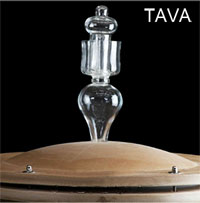
Another handy tool is a sample tap so you don’t have to open the amphora every time you want to grab a sample.
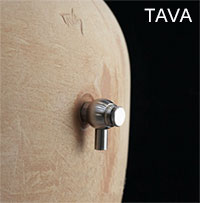
Whether you’ve been producing fresh tasting wines for years or you think it’s a passing trend, finding new ways to produce quality wines will help keep your vineyard relevant.
Amphoras can help you meet the challenge of giving younger wine drinkers what they want and, at the same time, emphasize some of the great qualities in your wine that you might not normally get to see.

